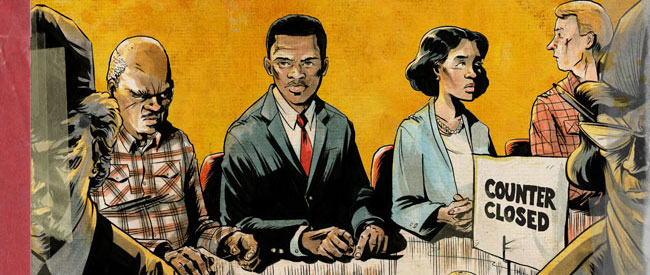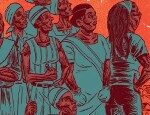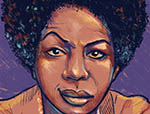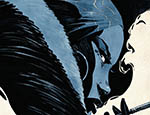March: Book One is something that people are going to be talking about for the rest of the year. And for good reason. It’s an important book that is well told, a few structural hiccups aside.
March: Book One is the first in a planned trilogy of graphic novels co-written by and about the life of Congressman John Lewis. This first book places a heavy emphasis on his early years growing up on a farm in Alabama and his vital role in the nonviolent sit-in protests in the late 1950s and early ‘60s as a member of the Student Nonviolent Coordinating Committee.
Lewis and Andrew Aydin co-wrote this book with art from Nate Powell. The first-time comic writers show an impressive understanding of the medium with their script but the real star of this book is Powell. The art here is what separates this OGN from simply being another well done, educational graphic novel.
Instead, what Powell is able to do with his art in this book is transport you back to another time. He has a knack for drawing each and every character to be their own unique person, and each one comes alive through the pages.
The art is done with a similar mindset to how Georges Jeanty did the Buffy comics, each real life person is instantly recognizable, but not in a distractingly photorealistic way. The way Powell cartoons the faces helps express the emotion of the moments, but what’s even more impressive is the way he is able to show restraint on a character’s face. This is vital in the moments where the characters are tested in their vows of non-violence. The panels where the angry white patrons harass the protesters are breathtaking in their restraint. Scenes that could easily be drawn in an over-the-top way by a lesser artist are handled with a delicate touch. Powell never resorts to angry, shouting faces when a more subtle approach tells the best story.
The writing unfortunately can’t quite match the art’s restraint. The story is written mainly in flashback narration from the point of view of Lewis as he offers his own insights into both his life and the sit-ins. The first-person view is very insightful and entertaining and the writers do a great job of keeping the story flowing. But occasionally there is more explanation when less is needed. The book’s structure is also somewhat problematic. It’s likely that the 2009 framing device will pay off in the next two books, but it is almost completely unnecessary in this opening chapter and the scenes with Lewis teaching a mother and her two sons about the Civil Rights history felt a bit indulgent.
The biggest problem with the 2009 scenes however, are that they simply distract from the past, which is rendered in a fascinating way in this book. Top Shelf promised that this wouldn’t be a dry education book, and they were totally right. The book is very educational but it moves with such speed and is so well told that it doesn’t feel like a history lesson. The stories that take place in the past all offer wonderful, terrible, and inspiring truths about our history.
March: Book One is something that people are going to be talking about for the rest of the year. And for good reason. It’s an important book that is well told, a few structural hiccups aside.
John Lewis and Andrew Aydin (W), Nate Powell (A) • Top Shelf, $39.95, August 13, 2013.
















[…] https://www.brokenfrontier.com/march-book-one/ […]